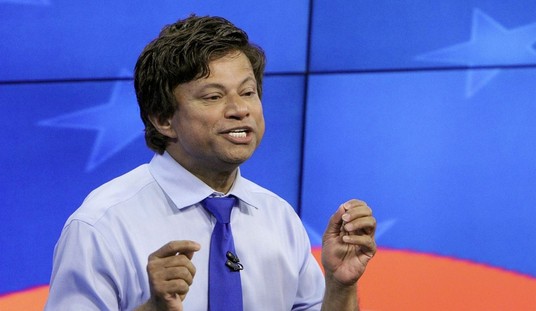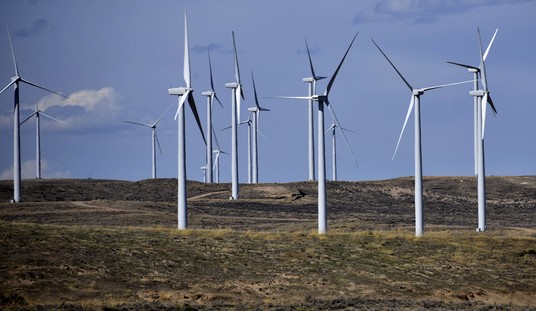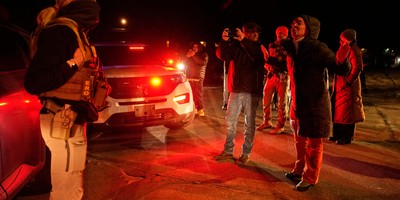With this year’s Thanksgiving holiday at our door, it is fitting that we ask an important question that has so much to do with our Constitutional liberties: What is the Separation of Church and State?
Why is it fitting to ask this question as we approach the Thanksgiving holiday? Well, it’s precisely the Thanksgiving holiday that reminds us of the origins of the phrase, separation of church and state.
In 1620, a group of Christian pilgrims known as the Separatists washed ashore in what came to be known as Plymouth, Massachusetts. They first left England to escape religious persecution there. They landed in Holland but realized Holland was not a place that allowed their faith to flourish. They set sail again; this time for America.
When the pilgrims set up their colony in Plymouth, Massachusetts, they soon employed a policy that came out of their own struggles for religious freedom. They employed the first American policy of a separation of church and state.
This may seem like a counterintuitive decision for a group of deeply religious people. However, the Separatists knew full well that when the power of the church is placed under the control of the government, the government then begins to mandate its own sanctioned religious practice. The Separatists had endured the religious persecution of the state in England and wanted to ensure that no such persecution would occur in America. Unlike the Puritans, who believed in establishing some form of a Theocracy, these Separatists, being true to their name, decided to separate the two entities of the church and the state so as to allow the free expression of religion to flourish. That is precisely what happened. Early America in the 1600’s saw many religious groups and sects set up colonies that were specifically designed for the free expression of their religion without government interference. That is what the separation of church and state is really all about: keeping the government out of the church’s business.
Recommended
Fast forward to the writing of our nation’s Bill of Rights in 1789. Founding fathers like Patrick Henry and James Madison knew that allowing a mandated government religious practice would stifle religious expression in the new nation. They decided to embrace what is the most harmonious balance between the federal government and the church that the world has ever seen. They wrote the First Amendment of the Constitution.
In the First Amendment we see the balance between the federal government’s role in protecting religious practice and not coercing it. The First Amendment of the Constitution of the United States, which guarantees all Americans the freedom of speech, religion, press, petition and assembly, has this to say about religious practice: "Congress shall make no law respecting an establishment of religion, or prohibiting the free exercise thereof…”
The federal government cannot mandate a religious practice, nor can they prohibit religious practice. Unfortunately, in the last few decades we have seen many judicial rulings that demonstrate a desire to uphold the establishment clause of the First Amendment at the expense of the free exercise clause. This is completely contrary to the purpose of the First Amendment and a violation of it as well.
The first major case that undermined the balance between the establishment clause and the free exercise clause occurred in 1947. In Everson vs. Board of Education the Supreme Court, led by Justice Hugo Black, an FDR appointee and member of the Ku Klux Klan, reinterpreted the meaning of the First Amendment of the Constitution. This decision set in motion an unconstitutional chain of events that has undermined our First Amendment liberties ever since.
Just what did Justice Black and the other FDR appointees to the Supreme Court do? They hijacked a phrase used by President Thomas Jefferson, “separation of church and state,” found in a letter he wrote to the Danbury Baptist Association (1802). Jefferson’s letter was actually used by the court to limit religious freedom.
By taking completely out of context the phrase used by Jefferson in his letter, "separation of church and state," the Supreme Court ruled that the freedom of religious expression in the public square was a violation of the “separation of church and state” found in the Constitution. This is an astounding ruling, as the phrase “separation of church and state” is not even found in the Constitution.
In 1947, the Supreme Court actually used Jefferson’s letter to the Danbury Baptists as the basis for their decision, even though his letter is not Constitutional law. This is another example of the Progressive Bait and Switch tactic at work that I spoke of in my last article with Townhall.
Another interesting fact concerning Jefferson's use of the phrase, “separation of church and state” is its true meaning. Thomas Jefferson used this phrase as nothing more than a metaphor to express the First Amendment’s role as a protector of religious expression in the public square. So even if Jefferson’s letter was Constitutional law, Hugo Black and the other FDR appointees on the Supreme Court still misinterpreted the meaning of Jefferson’s letter and the separation of church and state.
In his letter to the Danbury Baptist Association, President Jefferson said he believed there was a "wall of separation" in the Constitution that was designed to keep the government from interfering in the affairs of the church, not a wall to keep free speech out of the public arena. Thankfully, the Supreme Court finally clarified what Jefferson truly meant in Lynch vs. Donnelly (1984) when they said that the phrase “separation of church and state” is nothing more than the opinion of Thomas Jefferson, a “euphemism” as they put it, not Constitutional law.
While the 1984 case was a breath of fresh air to those who love liberty, the damage of the 1947 case has led to other terrible decisions that defy logic, reason and the Constitution itself. In fact, the 1947 ruling, in spite of being inaccurate and unconstitutional, has become part of the American collective consciousness.
In what has become the most infamous Supreme Court ruling regarding religious speech, Engel vs. Vitale (1962), the Supreme Court reinterpreted the meaning of the establishment clause in the First Amendment and misused its authority to ban the free exercise of religion in schools. This is the famous school prayer case.
According to the Supreme Court in 1962, the free exercise of religion in school somehow violated the establishment clause of the First Amendment. The founding fathers would be up in arms to hear that free speech was now censored in the name of protecting the establishment clause.
While it is true that American students who do not want to pray in school should not be forced to do so, it also true that those who do desire to pray should not be denied their First Amendment right to do so. There is a balance in the First Amendment between the establishment clause and the free exercise clause. It must be upheld in order for liberty to abound.
Where do these liberal judicial activist judges get this bizarre and erroneous interpretation of the First Amendment and the separation of church state in the first place? Looking back in American history, we find that this same misguided interpretation of the First Amendment was actually the vision of Roger Baldwin, the founder of the American Civil Liberties Union (ACLU) in 1920. Baldwin, it is important to mention, was a member of the Communist Party of the USA.
It was Baldwin’s vision to remove all references to God and religion from the public square, even though the free expression clause of the First Amendment is clear as day. Starting around the 1920’s, a major reinterpretation of the meaning of the First Amendment and the Constitution itself began to make its way into the colleges and universities of the USA. It is this time in history that colleges and universities begin to teach that the Constitution is a “living document;” one that changes with the times.
Regardless of the opinion of radicals like Baldwin, it is important to remember that all Americans do have the Constitutional right of religious expression in the public square as long as the federal government does not coerce that expression. Ironically, what the Supreme Court did in 1947 and 1962 was coerce the limiting of religious expression, in keeping with Roger Baldwin’s dream. As such, the First Amendment rights of all Americans have been threatened and even violated in some cases, because the Supreme Court embraced the opinion of a man who was a member of the Communist Party of the USA, not the Constitution of the United States.
Finally, after more than forty years of cognitive dissonance concerning the free exercise of religion, the Supreme Court re-established the true nature of the First Amendment in Board of Education of Westside Community Schools vs. Mergens (1990). In this case, the Supreme Court upheld the rights of all students to voluntarily pray in school, form Bible study groups and express their religious beliefs provided the government, including government paid officials (i.e. teachers, counselors), do not coerce that religious expression. Yet, even with the Mergens case re-establishing the balance between the establishment clause and the free exercised clause, the damage of the 1947 and 1962 cases still lives on.
Let’s consider the 2002 case of Kala Brotos, a five-year old kindergarten student from Saratoga Springs, NY. Before eating her lunch, little Kala simply prayed out loud and gave thanks for her meal. Her teacher then scolded her before the entire the class, claiming that Kala violated the separation of church and state – Roger Baldwin’s version, that is. The teacher even claimed that Kala committed a “crime against humanity.”
Well, a crime against humanity was indeed committed -- against a little five year-old girl -- who simply gave thanks before her lunch. If this is not tyranny, I don’t know what is.
Take a closer look at our culture today. The propaganda concerning the First Amendment is staggering. Each year thousands of students are suspended, harassed, receive lower grades on their term papers, or even arrested for simply expressing their deeply held religious beliefs in the public forum. I know this personally having endured the discrimination and bigotry of liberal professors during college and graduate school. Such behavior is against federal law. It is called belief discrimination and it occurs more often than you think.
If we take a closer look at just what the Constitution really says, we will see that the religious practice of Americans is the choice of each citizen and cannot be censored even in public. The government cannot mandate religious practice, nor can the government deny that same practice. That is the balance of powers spelled out in the First Amendment. If we fail to maintain that balance then we as a nation are no longer truly free.
When we give thanks this Thanksgiving, let us remember the words of Thomas Jefferson, who said, “The God who gave us life gave us liberty at the same time.”

























Join the conversation as a VIP Member